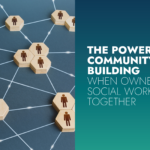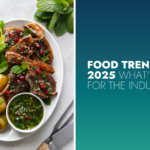While the importance of a content strategy hasn’t changed, a lot has. Your old approach may need tweaking; it may even need to be thrown out the window.
The coming weeks and months won’t be business as usual, so your content marketing shouldn’t be either.
Here’s an eight-step guide to getting it right.
1. Identify your business priorities
Just as everything else in the world has changed, your business priorities have likely shifted too. So before doing anything, evaluate your position in this new landscape and set out your goals.
What’s changed? What’s the same? Where are you today—and where could you be? Content marketing is a vehicle to success, but it’s up to you to determine the direction your business is headed.
2. See how content can help
Once you’ve identified your priorities, it’s time to think about how your content can play a part. Maybe you’re looking to drive immediate demand; if people can’t buy your product right now, it might be a matter of reminding your audience that you’re there when they’re ready.
With your goals for the short-term set, figure out how your content can help reach them. Can you be an educator, an innovator, or a thought leader?
3. Find your audience
Think you know your audience? Think again—literally. Priorities, routines, and challenges have changed, which means you need to consider how, where, and why you’re going to connect with your target market.
The changing landscape may mean you have a whole new audience, in which case you’ll need to figure out why they’ve gravitated towards you at this time, how they differ from your existing audience, and how to use it to your advantage.
Consider reaching out to your audience to gauge where you—and they—stand; conduct a survey, ask questions on social media, or crunch the numbers using your analytics.
A note: there could be one segment deserving of special attention. Changing minds and habits in this environment is difficult; focusing on what content marketing guru Joe Pulizzi calls your “true believers”, those already committed to your cause, may be more beneficial than targeting a broad base.
4. Spot your angle
You’ve considered your needs, and those of your audience; it’s now time to bring them together. Where they meet—the overlap in the Venn diagram—is your sweet spot, where you can weaponise your expertise and resources to be the best answer.
Then, you figure out your content tilt. Put simply, that’s your unique offering; the area where you differentiate from your competition, maximising your chance of breaking through and standing out from the crowd.
Can you focus on a niche area, or an under-served segment of your audience? Can you talk about a topic in a new and fresh way? Is there a platform or format, previously under-utilised, that you can own? Or do you have resources that are exclusive to you, allowing for a truly singular take?
An example is the work we do at Zahra for the food and parenting industries. We conduct research and leverage insight from our food publication’s (Easy Food) audience, which has a 68k print readership and 31k+ email subscribers, and our parenting community everymum, which has over 200k active members in Ireland.
We use this insight to create infographics that not only add value for our clients, but position Zahra as thought leaders.

5. Get creative
When you’ve pinpointed your tilt, plan your approach; from tone and topic to font and format, it’s vital to ensure everything you do fits with these unprecedented times.
Your content should put the customer first; let your sell take a back seat. Be smart and sensitive, recognising that what’s worked before may be redundant now. That’s especially true of the form your content takes, whether it be webinars or white papers, games or gifographics, find formats to suit the current scenario.
6. Adapt your content creation and distribution plans
With shifts in work environments around the world, your processes have likely been altered.
When it comes to content creation, ask yourself if you can create and distribute your content in-house or do you need agency support? Will your approval process change? How does your turnaround time differ?
When it comes to distribution, ask yourself where your audience are now spending their time. What are they searching for? What social media platforms are they using? Monitor trends in audience behaviours and make sure your plans match.
Be flexible in both creation and delivery to suit the new situation.
7. Time it right
Cadence is a fancy word for how often you publish content. It’s become a buzzword of late, and with good reason.
Whether it’s limited resources or furloughed staff, there are all sorts of reasons you might not be firing on all cylinders right now. It’s important that your content calendar reflects this, so be realistic; now is not an ideal time to expect maximum productivity.
8. Measure your success
Back when you set your goals, you will have mapped out a desired result; what you wanted your audience to know, think or do after consuming your content. Well, now it’s time to see if it worked.
Set real, short-term goals for your content—even six months is too long in the current climate—and plan how to measure whether it’s been successful. The metrics and KPIs you use might differ from your norm, but they’re still the only way to know if you’ve found a winning formula.
Need help or have questions?
Send me an email: gmiltiadou@zahramediagroup.com

















